For the first dinner after arrival we go to the next food court around the corner. It feels safe in the surroundings. Many above average bars and restaurants, some with live music, but we are just too tired for it. One can have a full meal for 6 USD in the food court. Thereafter a drive into Centro historico by Taxi.
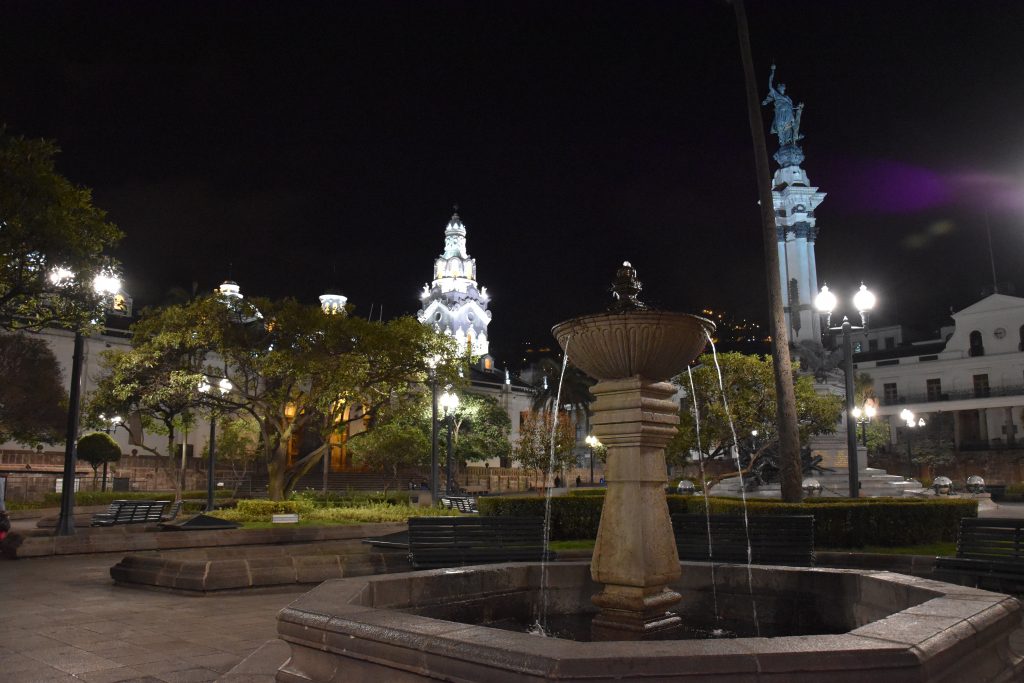
Plaza Grande at the presidential Palace
The Taxis are always around, you just need to raise your thumb, recognisable in the yellow and green colour. Either you agree for the taxometer or a fix price in advance, depending on the distance, something between 3 and 5 USD.
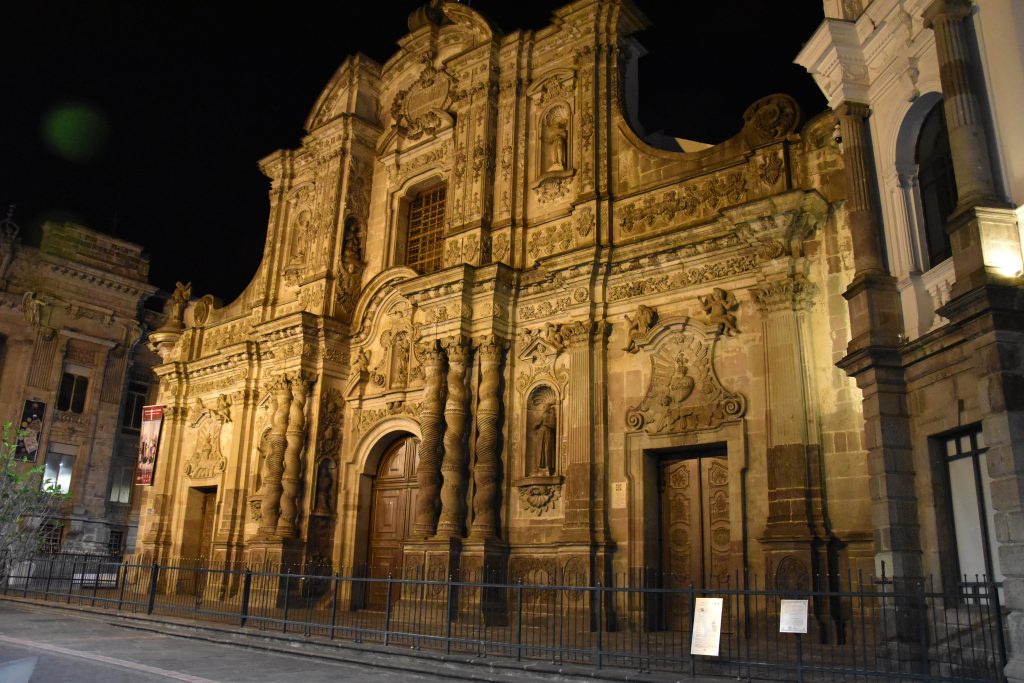
The Compañía Jesuit church, La Iglesia de la Compañía de Jesús
The Andes highland was conquered by Spanish Conquistadores in 1534. Initially Diego de Almagro founded Santiago de Quito, lateron in the same year Sebastián de Belalcázar moved the town to present location and renamed it as San Francisco de Quito in December 1534. The indigenous settlements around Quito were assigned to the new town.
The Centro historico of present day has been one of the first 12 nominations to the list of UNESCO World Cultural and Natural Heritage, beside the Galapagos Islands in 1978. Other first nominations were e.g. Aachen Cathedral, Cracow’s Historic Centre or Yellowstone National Park.
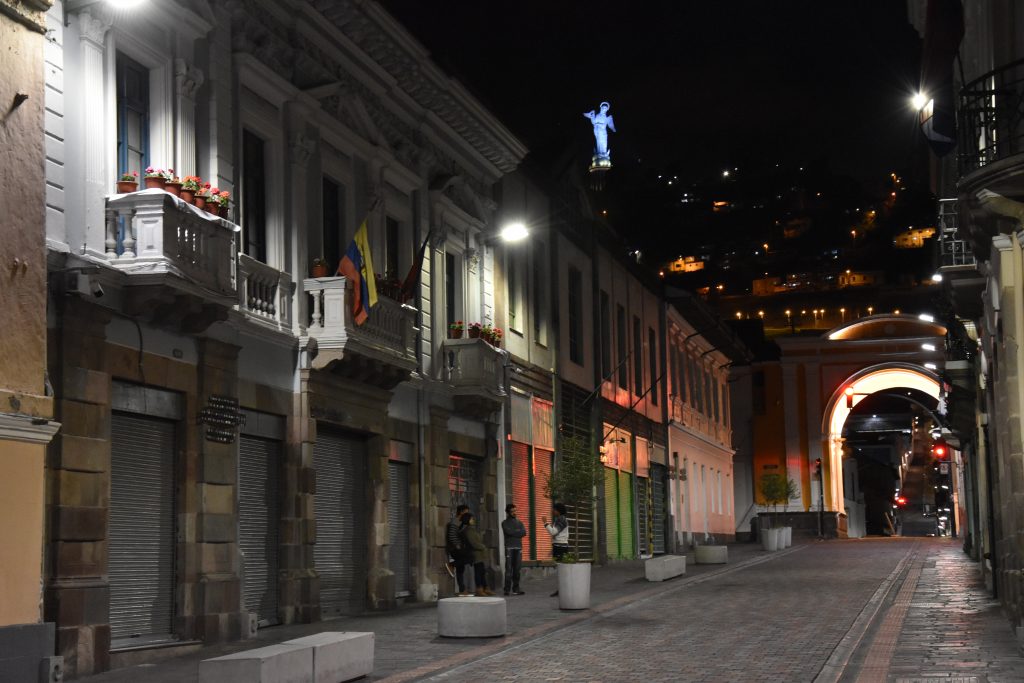
Calle Garcia Moreno by night. With view on the Virgin of Panecillo
Sebastián de Belalcázar also captured Rumiñawi, an Inca general, and ended the last organised resistance by the Incas. Conquistador Francisco Pizarro imprisoned the last Inca Emperor Atahualpa in 1532 and held him in the Ransom Room in Cajamarca, Peru today.
Atahualpa, seeing that the Spaniards cherished gold above all, offered Pizarro to buy his liberty by filling the room where he was kept in prison with gold and the two following rooms with silver, up to the level of the reach of his arm. He asked for two months to do so.
Rumiñawi marched towards Cajamarca to deliver the huge amount of gold. After the Spaniards executed Atahualpa, Rumiñahui returned to Quito and ordered to hide the gold and the “Treasure of the Llanganatis” away beforehand. During his captivity he was tortured but never disclosed the location of the treasure. He was executed in 1535.
Today Rumiñawi is a national hero and his portrait commemorated on a former Sucre (Ecuadorian legal tender) banknote.
Now we are really ready for bed, our first night in Ecuador.
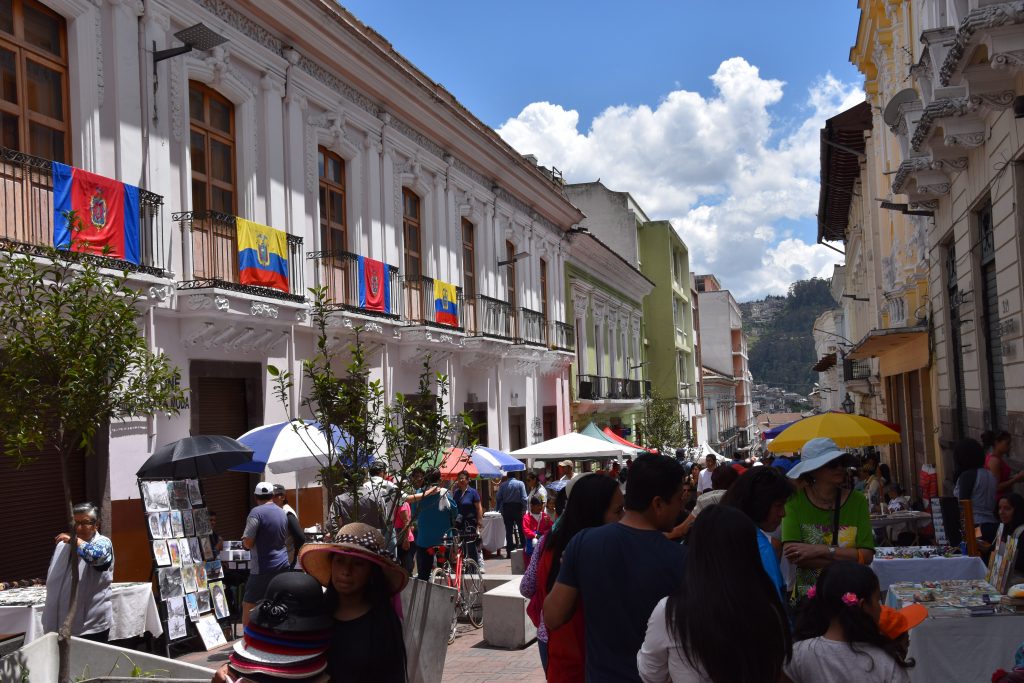
During the day the streets of Centro historico are full. The scenery of a funfair and family day.
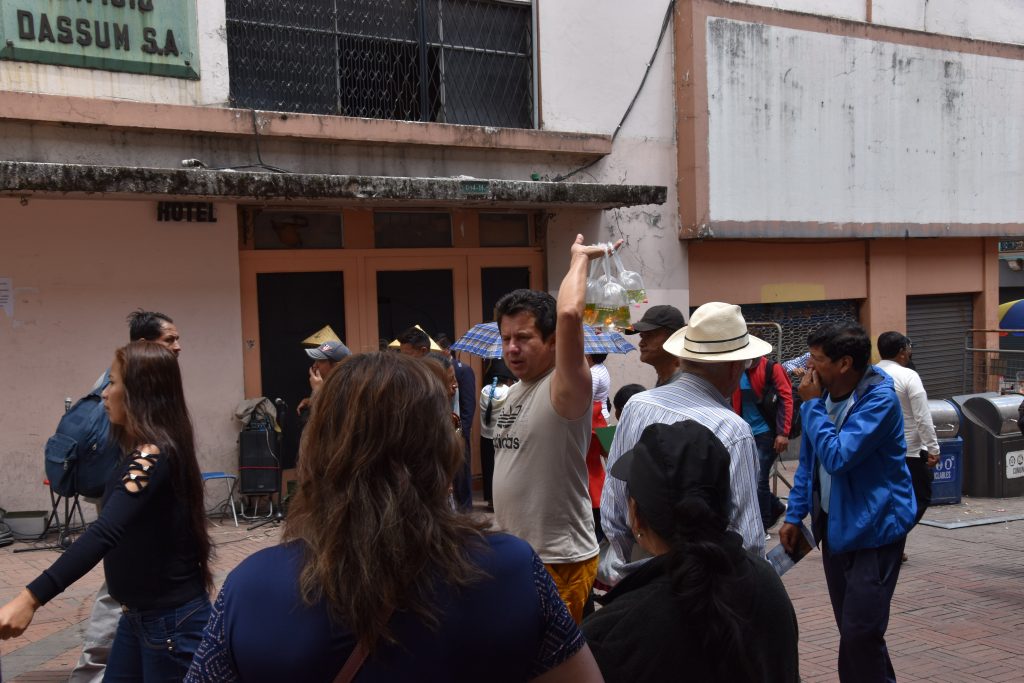
A mobile ornamental fish vendor. His fishes are already packed in plastic bags.
The Spanish colonial architecture in the Centro historico is omnipresent and well kept. Many churches and palaces. One is better than the other.
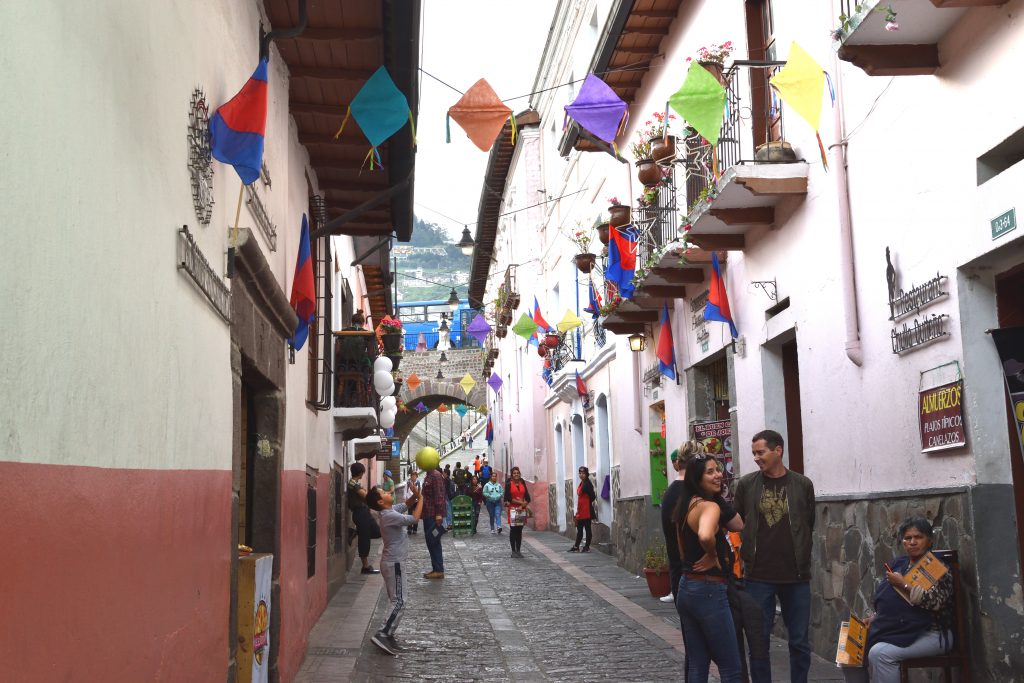
The old town lane at La Ronda. With many bars, restaurants and artisanal shops.

The oasis of calm in the Franciscan monastery
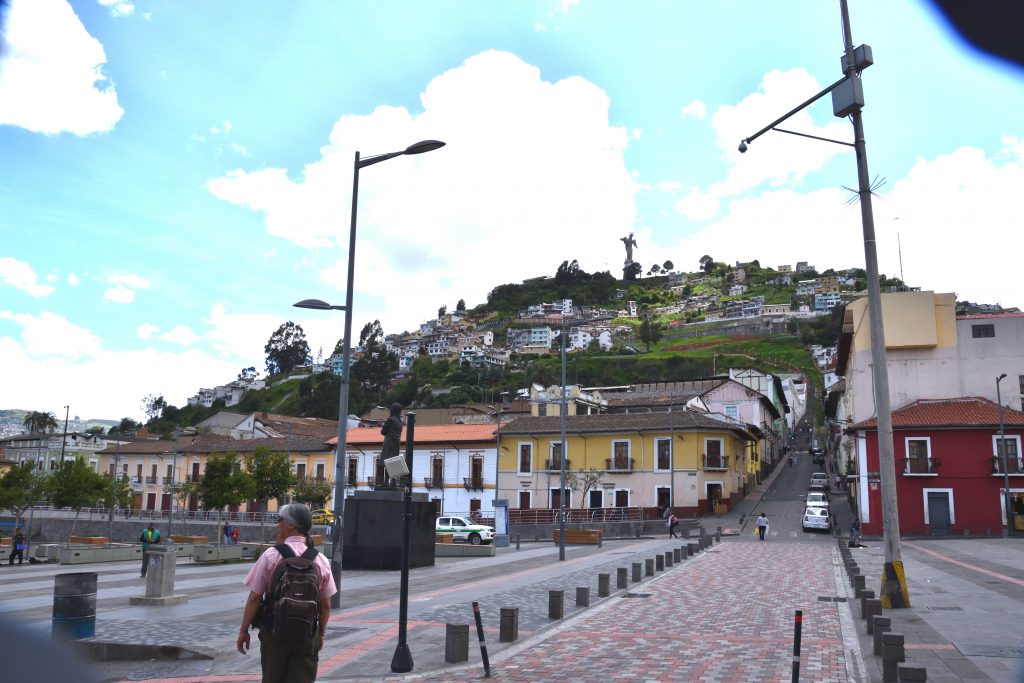
A 2 km walk mostly over stairs up to the hill of Virgin of Panicello. Quite tiring. Especially in the knowledge that you may drive by taxi easily up to the top.
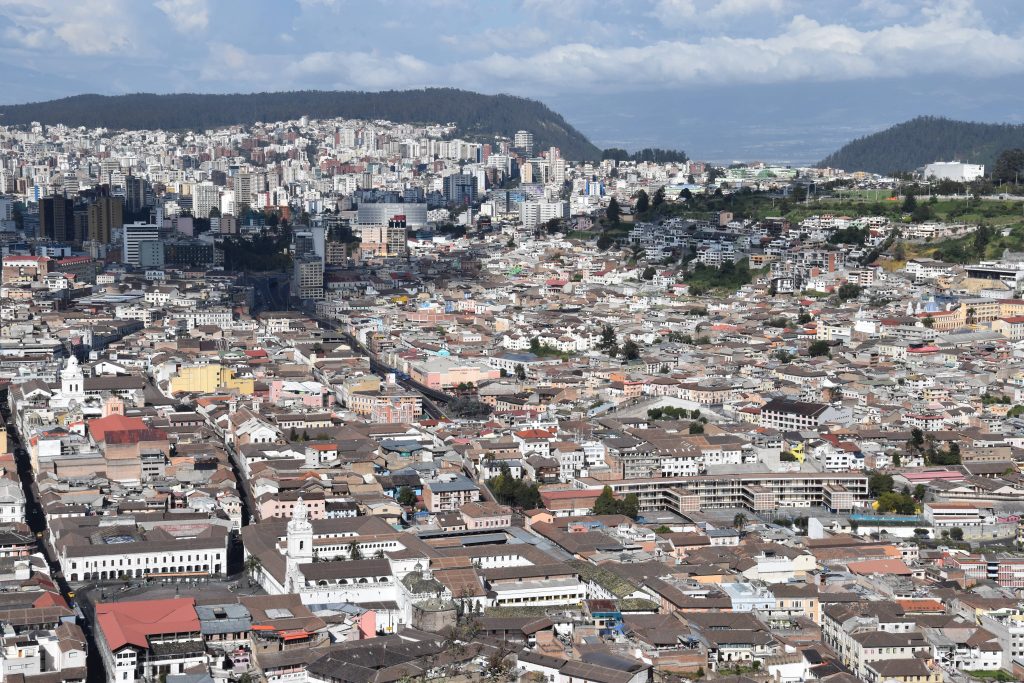
Therefor our effort is compensated by a beautiful view over Quito on top of the hill. We climbed up to the statue for 1 USD. And not least the delicious meal in the chic Pim Restaurant at the Virgin feet.

